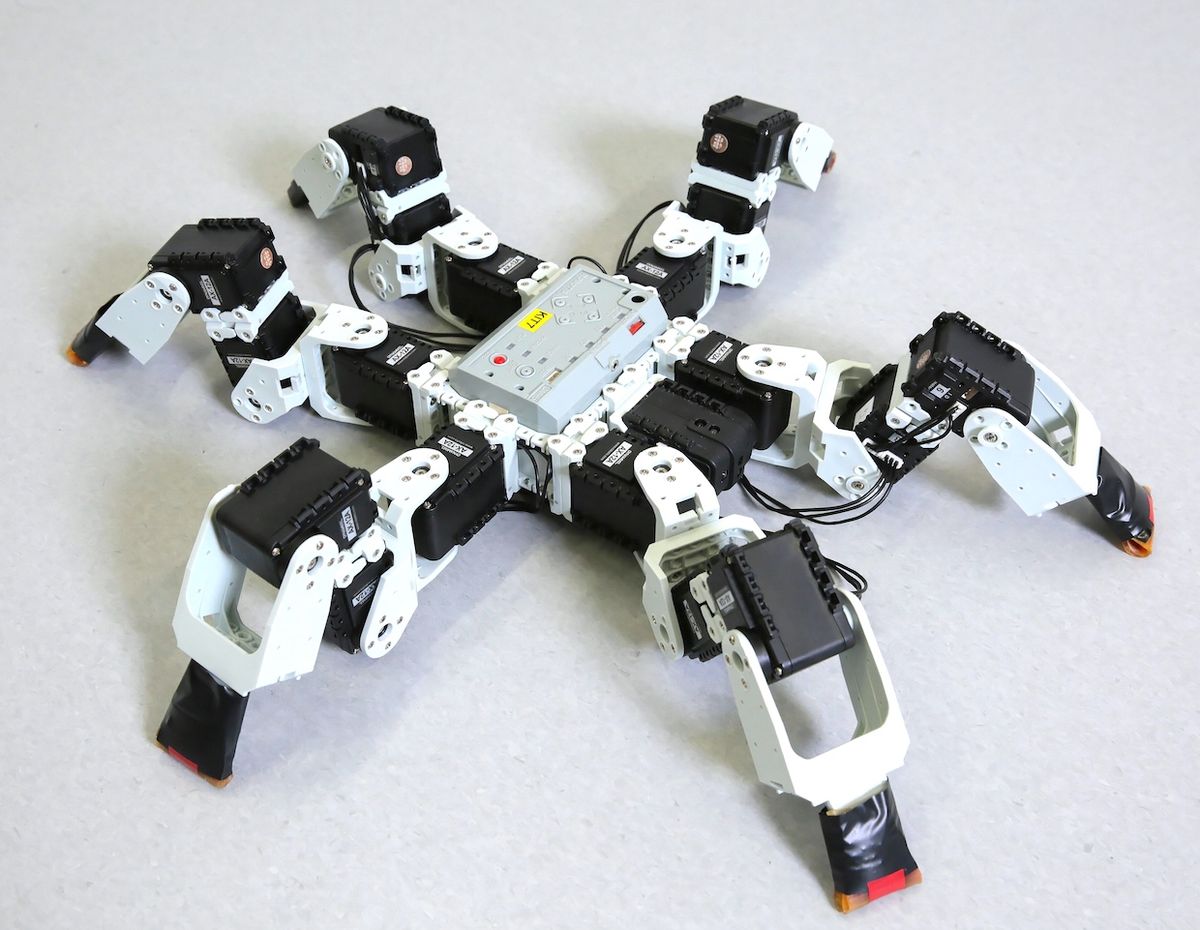Usually, biologically inspired robotics is about figuring out evolution’s clever tricks and then trying to apply them to your robot to make it faster or more efficient or more skilled or whatever. It isn’t very often that a robot ends up beating nature at its own game—evolution is a very intelligent designer, and roboticists are going up against a half billion years of trial and error.
In an article published last week in Nature Communications, researchers from EPFL, in Lausanne, Switzerland, managed to show that for legged hexapods, a bipedal gait (using just two active legs at once) is often the fastest and most efficient way of moving, even though insects use a tripedal gait instead.
Generally, the most efficient way of moving (especially moving quickly) for legged animals is to minimize the amount of time that you’ve got legs making contact with the ground. You see this all the time in mammals, the fastest of which prioritize flight phases, where motion is more like a sequence of dynamic jumps as opposed to just a sped-up walk. Hexapedal insects are a bit different, because they usually keep at least three legs in contact with the ground at all times, no matter how fast they’re trying to move.
This appears a little bit unusual from an efficiency perspective: A tripedal gait tends to not work as well as a bipedal gait, simply because a hexapod that uses a bipedal gait ends up getting three power strokes per gait cycle instead of two. The EPFL researchers tested bipedal and tripedal gaits on a hexapedal robot, and there’s no contest: It’s 25 percent faster to use two legs at once instead of three. So if you’ve got a hexapedal walking robot and can manage something slightly more dynamic and not statically stable, there’s no good reason not to use a faster bipedal gait instead of an insect-inspired tripedal one.
What with evolution working the way it does, the obvious question now is why insects are using a 25 percent slower gait than they could be. The researchers figured out that it has to do with how gaits work when you’re trying to move on places like walls or ceilings using feet that can grab or stick to surfaces, like most flying insects have: Tripedal gaits are best if you need to stick to things, while bipedal gaits are best for running along the ground.
Indeed, when the researchers gave flies some polymer “boots” that negated the adhesive properties of their feet, they started transitioning to a bipedal gait instead of a tripedal one. But the researchers didn’t stop there. Next they put flies on a very slippery surface, and the result was that the flies didn’t change their gait behavior at all, suggesting that it’s the leg adhesion structures themselves, or the sensory feedback that they generate, that leads to the change in gaits. This may explain why insects don’t transition from tripedal gaits to bipedal ones even when adhesion isn’t necessary, or it could simply be that if your feet are sticky, it takes the leverage of three of them to unstick the other three.
I love this research because it manages to do two very cool things at the same time: First, it uses both simulations and physical robots to empirically determine the fastest and most efficient way for a hexapedal robot to move, which is very useful for anyone trying to make fast hexapedal robots. And second, when the results of the testing showed a gait different from what hexapedal insects use, the researchers were able to use the data into experiments that teach us about how and why insects work the way they do. This is biorobotics at its best.
“Climbing Favours the Tripod Gait Over Alternative Faster Insect Gaits,” by Pavan Ramdya, Robin Thandiackal, Raphael Cherney, Thibault Asselborn, Richard Benton, Auke Jan Ijspeert, and Dario Floreano from EPFL and the University of Lausanne, appears in the current issue of Nature Communications.
[ EPFL ]
Evan Ackerman is a senior editor at IEEE Spectrum. Since 2007, he has written over 6,000 articles on robotics and technology. He has a degree in Martian geology and is excellent at playing bagpipes.



